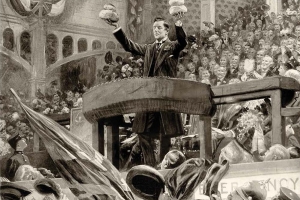Birmingham Swords
ON THE BATTLEFIELD
Some of the finest swords made in Britain during the late-eighteenth and early-nineteenth century originated in Birmingham.
Many of these weapons were carried onto the battlefields of Europe during the Napoleonic Wars, and evidence of their beautiful craftsmanship can still be seen today.
On Sunday 18 June 1815 the nations of Europe gathered on a waterlogged battlefield nine miles south of Brussels to perform the final act of the 23-year drama that was to become known as the Napoleonic Wars. Almost three hundred thousand heavily armed men would decide the fate of Europe. For some their lives would depend upon the effectiveness of their swords, and many of the finest were manufactured and refined in Birmingham.
The British cavalry were equipped with the 1796 pattern cavalry sabre. The version for light cavalry had a murderous curved slashing blade. The heavy cavalry of the Union Brigade were armed with the 35-inch straight steel pallasch based upon the Austrian pattern 1769/75 sabre. The light cavalry sabre had been the creation of Major General John Gaspard Le Marchant and was developed in collaboration with Henry Osborn, sword cutler of Birmingham.
KEYWORDS: Swords, Sword Making, Birmingham, Napoleonic Wars, Waterloo, Steel
Categories:
Books from History West Midlands

Fortunes of War:
The West Midlands at the Time of Waterloo
In Andrew Watts, Emma Tyler, Andrew Watts, Emma Tyler, Waterloo, Military,
Buy Now £3.00


